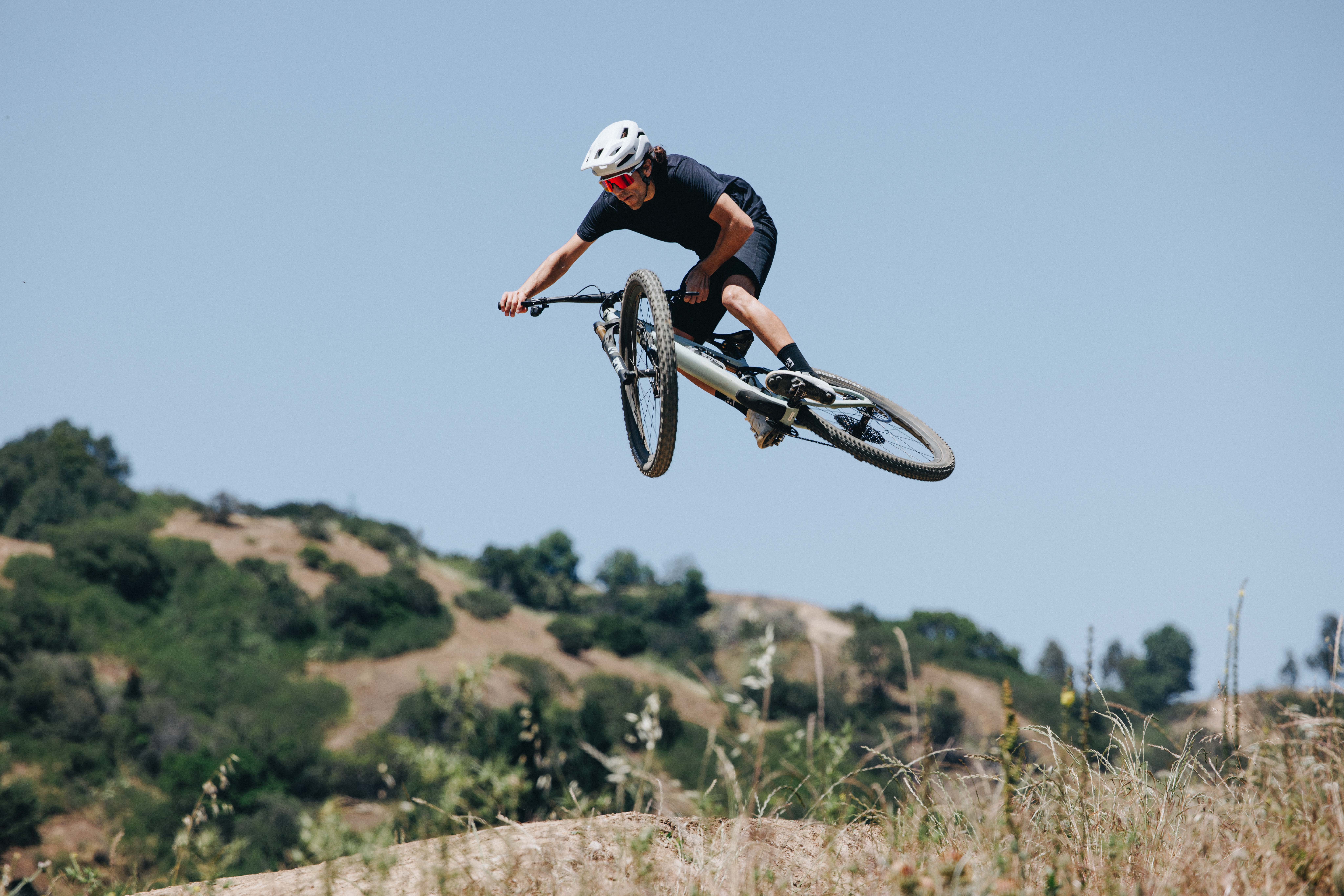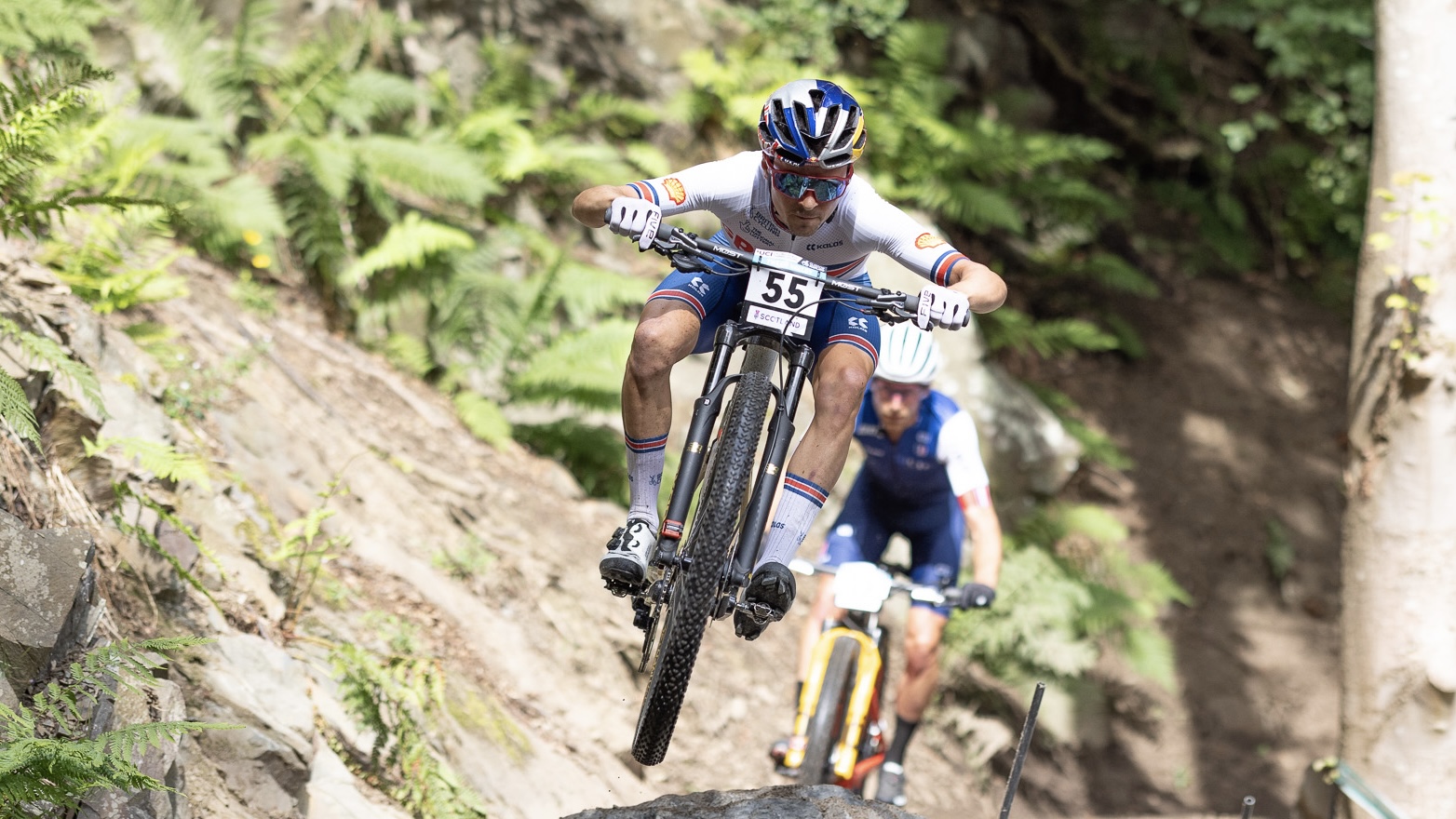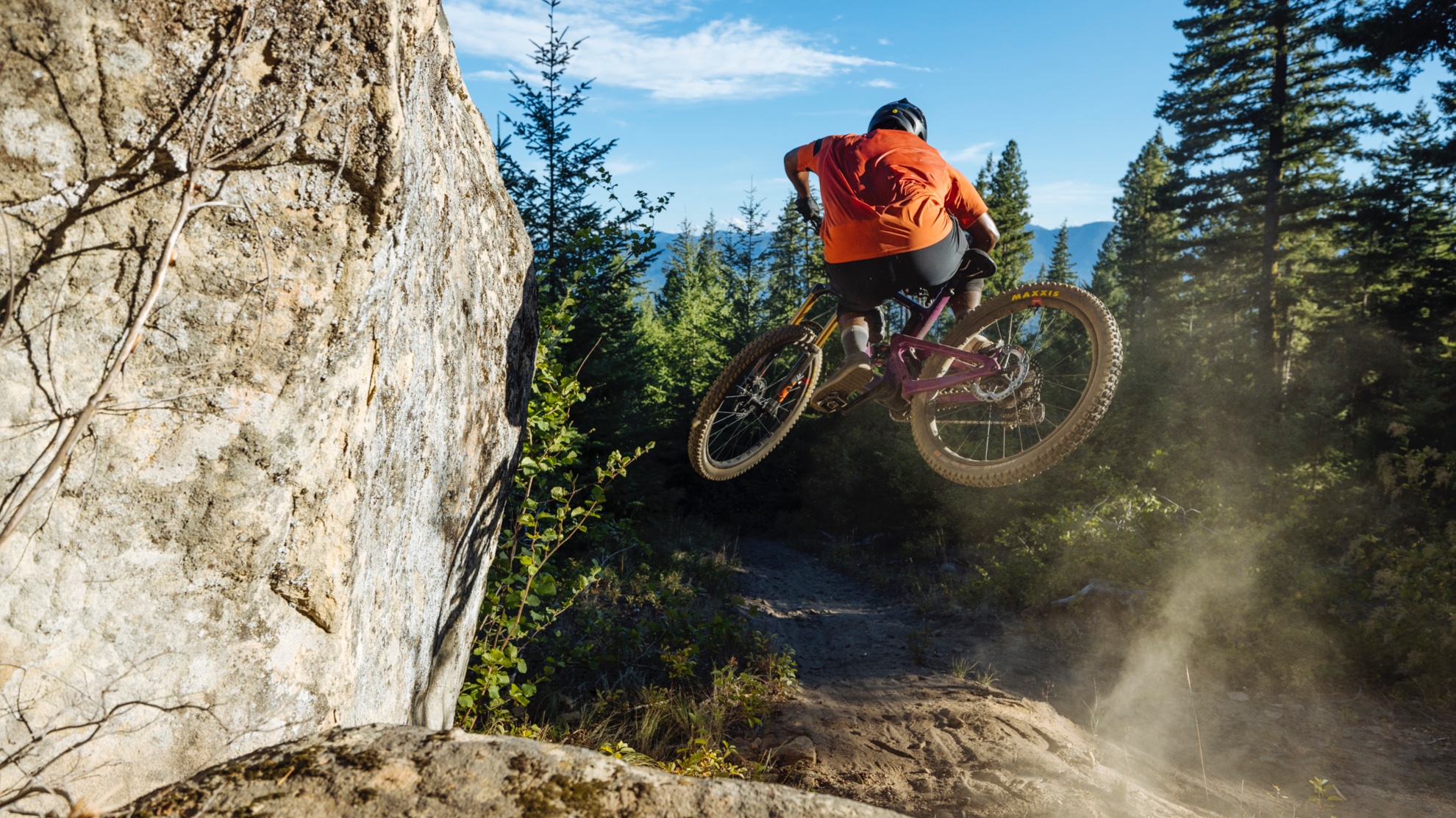
I’m old enough to remember when mountain bikes weren’t mountain bikes. Most kids round us called whatever bikes they’d stuck wide bars and knobbly tires on ‘scramblers’ – because that was the motorbike equivalent. Bigger boys and girls who smoked cigarettes bluffed their way into pubs and scared my flares into a flap called them Bombers. That was the name Raleigh chose for their first beach cruiser-style ‘bully bikes’. In France, sophisticated off-roaders, who probably smoked unfiltered cigarettes and drank wine, called their bikes “Velo Tout Terrain” and for a while “All Terrain Bike” was the go-to phrase for early MTBs in the UK too.
Over in America though, Gary Fisher and Charlie Kelly stuck the name “Mountain Bikes” above the tiny shop they set up to sell their custom ‘clunker’ cruiser bikes to local riders keen to join the ‘Repack Scene’. Just like Gary, the name was over the top for the riding most people did on these new “Fat Tire Flyers”, but it sounded exciting and adventurous. That meant Gary and Charlie were soon selling more bikes than Tom Ritchey could make for them. That inspired other people like Joe Breeze, Scot Nicol, Otis Guy, the Koski Bros, and others to start upscaling their existing clunker production and bigger brands, like Univega and Specialized, to start making ‘mountain bikes’ too. At which point Gary and Charlie realized the lawyer they’d hired to protect the name ‘Mountain Bikes’ had screwed up and soon their brilliant branding became the household name for an entirely new form of mountain biking.
Separate and sell
Even back then, mountain biking covered an incredible range of different ways to ride off-road, ranging from basically hiking on a bike in the local area, doing dumb tricks in the woods or wasteland, or tackling overland camping trips through the Colorado Rockies. Even racing came in loads of different flavors by the early '80s, either against cyclocross riders on closed circuits, timed downhills like Repack or long climb and descent race formats like Reseda to the sea. But while everything we do now – bikepacking, trials, XC, DH and enduro – was basically being done in essence back then, it was largely being done on the same bikes. Disciplines have been getting more and more extreme since the '90s though while bikes have evolved to suit different specialist uses and keep design and marketing departments busily justified in the process.
The continued evolution of what riders are doing and how bikes have changed to keep pace hasn’t stopped either. But like other aspects of mountain biking right now, I think we need a big shake-up and simplification to re-align category names and put the right people on the right bikes.

Racing is racing
The one that’s really out of whack now is XC/Cross-Country or XCO/Cross-Country Olympic following the rules of the Union Cycliste Internationale/UCI governing body. For a start, they’re not actually racing ‘across country’ anymore. They’re just going round a short, purpose-built trail several times. Those trails are now so technical that most average riders wouldn’t be able to ride them without at least thinking twice. While the first glimpse of the 2024 XCO World Championships course won’t be until this afternoon as part of the “Brazil MTB festival", I wouldn’t be surprised if it had the shoulder height drops, gap jumps and random boulder heaps that we’re regularly seeing on other race tracks. Features that definitely scream ‘trail’ to me and which all the latest race bikes are evolving to take in their stride while still being super efficient to pedal.
Interestingly, I'm currently sat on an embargo for a new suspension fork described as being specifically for Marathon (XCM), not XCO, which looks a lot like the same company's ‘gravel’ fork. You know, ‘gravel’, that bike category where you actually ride cross country from one place to another. And that’s increasingly being sold using images and footage of riders shredding rowdy singletrack image. Several companies are already using the phrase ‘flat bar gravel or aggro gravel’ for bikes which are basically XC hardtails too, because they find that sells a lot better than calling them an XC hardtail. Because the properly off-road part of the gravel riding scene sounds fun and friendly, whereas XC – and now gravel – racing has been the perverted preserve of slavering skin suit pain addicts for decades. Which is absolutely fine, and I love squeeing into a tight outfit to thrash myself into a frenzy as much as the next shaven-legged sticky grey gel swallower. But whether it’s on gravel or a purpose-built trail course why not just call that gravel racing, trail racing or BSM (Bicycle Sado Masochism), because that’s the primary point of the enterprise? That would leave cross-country free for people who are doing that on whatever bike they want from the genre-fluid gravel/marathon/XC range at whatever pace they enjoy.

Trail shouldn't be a trial
In my mind, that would leave the ‘trail’ tag free for any bike or rider that was still fun to pedal at pace, but could comfortably handle anything most of us have the chops to attempt. Split it into lightweight, heavyweight, short travel, long travel, high pivot, whatever you want if you have to. But don’t call bikes that weigh 35 pounds (16kg) trail bikes and don’t call tires that weigh 3lb (1,350g) trail tires either. Because let’s be frank here, neither of those things are fun to pedal very far and promises of trail performance are going to be revealed as a serious trial of patience and suffering as soon as you try.
Instead, let’s firm up that winch up, charge down category as enduro. It suits the whole going out and joining up the best black/double black/wild backcountry rated DH runs bits while chatting with your mates on the in-between bits (or in the uplift truck) vibe really well. We can leave bike park and downhill where they are too, because they work fine and if there’s a motor involved just stick that as an e-suffix on the front of whatever category it would be otherwise. Because at the point brands like Merida are calling a 26kg e-MTB “Lite”, then the whole SL/full-fat distinction is as ill-fitting as single-size ski pants.

But does it really matter?
In terms of us as riders who know what we like doing and just get on with doing it regardless of labels, the names attached to different subsects don’t matter at all. After all, there was nothing except basic common sense to stop my mate Craig riding old-school DH/enduro tracks on a Specialized Epic World Cup with basically road tires on last night. I’ve no problem with the packs of 30kg e-MTB riders merrily ploughing round local farm track loops on glue tires. If it makes you happy then adopt whatever mountain biking pronoun you want.
I do think it’s an issue for people coming into the sport though, particularly at the gravel/XC end of things. It’s the fundamental reason that lots of people are ending up – literally – deflated because the labeling told them that they should load up with bags and ride rocky bridleways on a rigid bike with skinny tires and drop bars. Imagine how much more fun they’d have if that sort of cross-country riding was actually called cross-country and the bikes had meaningful suspension, bigger tires, bars big enough to actually fit bags on? Oh and a riding position that means they can see all the nature they were ‘bathing’ in, not just glance sideways at it in terror as they rattle downhill on drop bars.
Oh and if you’re working in a marketing agency and wondering what to do with the phrase ‘downcountry’, isn’t that what Beyonce’s latest album is?







